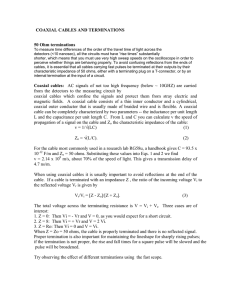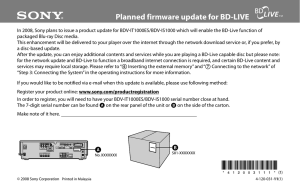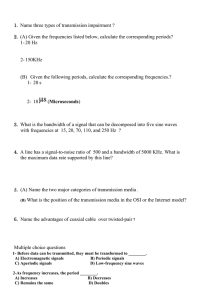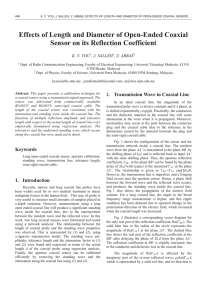Dispersion Analysis in Coaxial Cables at High Frequencies
advertisement
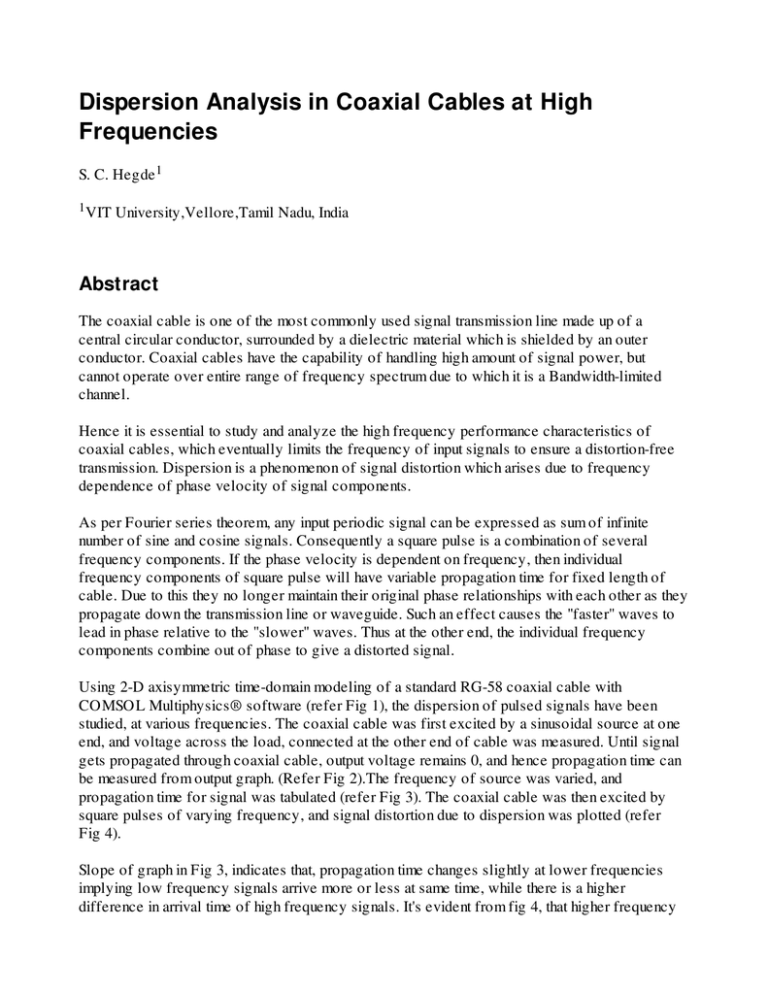
Dispersion Analysis in Coaxial Cables at High Frequencies S. C. Hegde 1 1 VIT University,Vellore,Tamil Nadu, India Abstract The coaxial cable is one of the most commonly used signal transmission line made up of a central circular conductor, surrounded by a dielectric material which is shielded by an outer conductor. Coaxial cables have the capability of handling high amount of signal power, but cannot operate over entire range of frequency spectrum due to which it is a Bandwidth-limited channel. Hence it is essential to study and analyze the high frequency performance characteristics of coaxial cables, which eventually limits the frequency of input signals to ensure a distortion-free transmission. Dispersion is a phenomenon of signal distortion which arises due to frequency dependence of phase velocity of signal components. As per Fourier series theorem, any input periodic signal can be expressed as sum of infinite number of sine and cosine signals. Consequently a square pulse is a combination of several frequency components. If the phase velocity is dependent on frequency, then individual frequency components of square pulse will have variable propagation time for fixed length of cable. Due to this they no longer maintain their original phase relationships with each other as they propagate down the transmission line or waveguide. Such an effect causes the "faster" waves to lead in phase relative to the "slower" waves. Thus at the other end, the individual frequency components combine out of phase to give a distorted signal. Using 2-D axisymmetric time-domain modeling of a standard RG-58 coaxial cable with COMSOL Multiphysics® software (refer Fig 1), the dispersion of pulsed signals have been studied, at various frequencies. The coaxial cable was first excited by a sinusoidal source at one end, and voltage across the load, connected at the other end of cable was measured. Until signal gets propagated through coaxial cable, output voltage remains 0, and hence propagation time can be measured from output graph. (Refer Fig 2).The frequency of source was varied, and propagation time for signal was tabulated (refer Fig 3). The coaxial cable was then excited by square pulses of varying frequency, and signal distortion due to dispersion was plotted (refer Fig 4). Slope of graph in Fig 3, indicates that, propagation time changes slightly at lower frequencies implying low frequency signals arrive more or less at same time, while there is a higher difference in arrival time of high frequency signals. It's evident from fig 4, that higher frequency square pulse underwent severe distortion compared to lower frequency pulse. This study thus concludes that dispersion effects become significant at higher frequency ranges in electromagnetic spectrum (~100 MHz -2GHz) , and place a limit on bandwidth of signal for undistorted transmission. The study has implications in field of RF and microwave transmission, as well as computer and instrumentation data connections, dealing with high frequency signals. Hence it becomes essential to model the coaxial cable and inspect the quality of signal being transmitted. Reference [1]D.M. Pozar, Microwave Engineering, Addison-Wesley, Boston, MA, 1990. [2]W. Hayt Jr and J. A Buck,Engineering Electromagnetics, Mcgraw Hill Publication,2001 [3]J. Barth and J. Richner,"Distortion of Fast Pulses by Non-TEM Effects in Coaxial Cables",Barth Electronics,pp 305-312(1995) Figures used in the abstract Figure 1: Modelling and Simulation Setup. Figure 2: Measuring propagation time for single-frequency sinusoidal input. Figure 3: Variation of Propagation time with signal frequency. Figure 4: Square pulse distortion due to dispersion.
